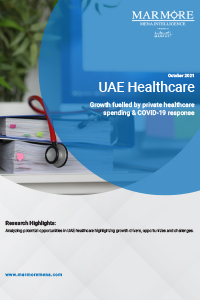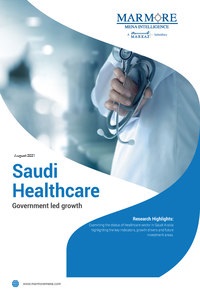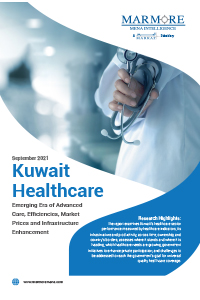UAE Healthcare
October 19 , 2021
Request Full Report Download Executive Summary Download Executive Summary
Executive Summary
UAE's population is expected to increase from 9.9 million in 2020 to 10.7 million by 2030 and as the population increases, the need for healthcare facilities and services rises along with it. In 2018, UAE spent close to 4.2% of the country's GDP on healthcare at USD 1,817 per capita. The government of UAE funds close to 52% of the healthcare expenditure while the rest is taken care of by the private sector. The UAE government has increased its healthcare budget to USD 1.4bn and 8.1% of the total budget in 2021 because of higher spending to tackle the COVID-19 pandemic. Urbanisation and rising disposable income have resulted in an aversion to exercise and consumption of processed foods leading to increasing instances of diseases such as diabetes, coronary problems and other obesity related illness that were not prevalent in the region previously. Currently, UAE healthcare infrastructure has been recognized as on par with international standards. Dubai is gaining popularity as a medical tourism destination due to its low cost, English speaking medical staff and virtually no queues for treatment. Mandatory Health Insurance introduced in Dubai and Abu Dhabi Emirates has played an important role in attracting the private healthcare providers to the market. The country has regulatory healthcare bodies with well-defined objectives and roles. IT and healthcare technologies are finding increasing use by the sector. UAE is also ramping up its investments in IT, supply chain, equipment management etc. Overall healthcare spending is projected to account for 5.1% of the country's GDP by 2029.
Key Discussion Points
- Impact of Demographic Changes & Lifestyle Habits
- Medical Tourism
- Healthcare Infrastructure Spending
- Preferences for Private vs Government Hospitals
- Technology adoption in healthcare
- Regulatory Bodies and Developments
- Challenges such as skill gap
Did you know?
- In 2018, UAE spent close to 4.2% of the country's GDP on healthcare at USD 1,817 per capita.
- UAE had 145 hospitals, 4,659 clinics and health centres with a cumulative bed capacity of 13,811 as of 2018 .
- Cardiovascular disease remains the leading cause of fatalities in the U.A.E., accounting for over two-thirds of all deaths..
- UAE has the highest number (196) of Healthcare Organizations with JCI Accreditation in GCC.
- UAE has the lowest government share in total healthcare spending in the GCC at 51.6%.
- As of 2018, there were 24,363 physicians, and 55,158 nurses & midwives who are working across the UAE.
- UAE's import dependency for pharmaceutical products is around 90%
FAQ
Table of Contents
- Executive Summary
- Drivers for growth
- Hospitals and Infrastructure
- Healthcare Professionals
- Medical Equipment
- Pharmaceutical Market
- Inpatient and Outpatient Analysis
- Role of IT and Healthcare Technologies
- Challenges
- Regulators
- Company Profile
- Appendix




